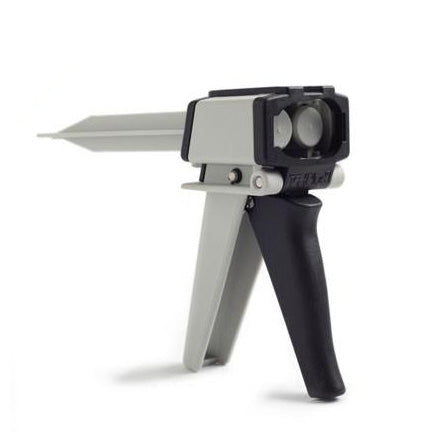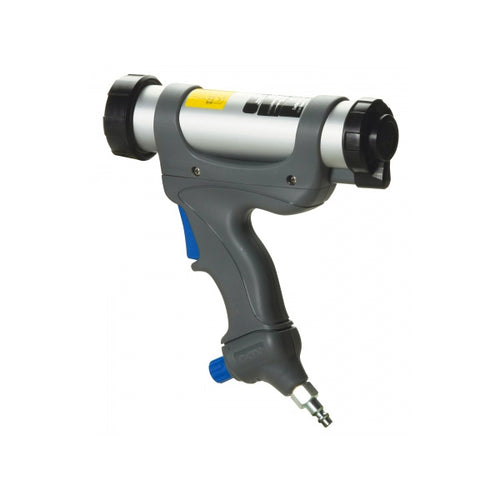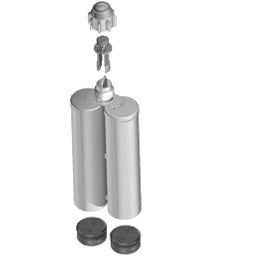Fiberglass Glues
What Is Fiberglass?
Fiberglass is a composite material made of fine glass fibers woven into a fabric and bonded together with some kind of resin. It may also be referred to as glass-reinforced plastic (GRP), glass fiber reinforced polymer (GFRP), or glass fiber composite.
There are various types of fiberglass depending on the specific formulation. In general, fiberglass is known for being as formable as plastic, but with more tensile strength than steel. It is also durable, stiff, and lightweight. It has a high resistance to various chemicals, water, weather, UV light, corrosion, and fire. Fiberglass is also dimensionally stable and a good insulator.
Altogether, fiberglass is a versatile material used in various demanding or high-stress environments. Depending on the application, it can be a cost-effective alternative to wood, concrete, or metal.
Bonding Fiberglass
One of the best properties of fiberglass is that it has such a high tensile strength but is still lightweight. Mechanical fasteners can add unnecessary weight or may negatively impact the structural integrity of the material due to drilling. Traditional welding is also not a viable option. Consequently, fiberglass is usually bonded together with adhesives.
Gluing fiberglass can be done effectively with the right adhesive and surface preparation. Because fiberglass can be used in more demanding application environments, the adhesive must be compatible with the environment and able to withstand the same conditions. Using the wrong adhesive could lead to cracking, yellowing, or even bond failure.
On top of choosing the right fiberglass adhesive, you also want to ensure you prep the substrate surface correctly before applying the glue. In some cases, fiberglass may be coated with wax or mold release that can negatively impact adhesion. Different resins may also require slightly different surface preparation. We go over surface preparation for fiberglass in more detail later in the article.
Adhesives for Fiberglass to Explore
There are a variety of adhesive glues for fiberglass available. To help you narrow down your choices, our expert team is sharing a few of their favorite glues for fiberglass.
-
![MMA 420 Toughened Impact Resistant MMA Adhesive - 5 Minute Open Time]()
Infinity Bond MMA 420
This fiberglass adhesive glue is so great because it has it all. Not only is it impact and shock resistant for high-strength applications, but also it is compatible with a wide temperature range and weather resistant. The adhesive is fairly flexible and able to withstand exposure to a variety of chemicals. It reaches handling strength in about 15 minutes and requires minimal surface preparation to achieve a strong bond.
-
![50 ml cartridge of 3M Scotch-Weld DP420 off-white-epoxy adhesive]()
3M DP420 Epoxy
This 3M fiberglass glue is known for its high-performance bonding with excellent peel and shear strength. On top of its great strength, it also meets UL 94 flammability standards for applications where fire-retardant properties are needed. It has a 20-minute work life and comes in an off-white color.
-
![Infinity Bond EP 420 High Peel and Shear Strength Epoxy - 25 Minute Open Time]()
EP 420 Epoxy
Another fiberglass glue epoxy, this adhesive is also made for demanding and high-performance bonding applications. It has a toughened formula that adds to its excellent shock resistance and can be used in temperatures up to 300°F. With a longer working time of 20 and 30 minutes, it is a good choice for applications involving larger surface areas or when components may need adjusting.
-
![Infinity EP 100 Clear General Purpose 5-Minute Epoxy]()
EP 100 Epoxy
If you are interested in speed, this product may be the right one for you. It has a fast set time of just 5 minutes and a fixture time of 20 minutes which is ideal for higher speed production lines. With a high static load holding and high shear strength, you can trust this product in many demanding bonding environments.
All these fiberglass glues have proven successful in a wide range of environments, but with over 50 years in the adhesives industry, we know very well that every application is unique. Ask our team of adhesive experts to get a personalized product recommendation tailored to your specific application needs.
Types of Glue for Fiberglass
There are several different types of adhesives for fiberglass that may be used. Because of the nature of fiberglass applications, often structural adhesives that can form strong bonds in demanding environments are a popular choice. Some common types are listed below.
Methyl Methacrylate Adhesives- These adhesives are great for applications that involve great strength and flexibility. They also require minimal surface preparation.
Epoxy Adhesives- For high-performance applications requiring a great deal of strength, epoxies are often a good choice.
CA Adhesives- If you are more interested in speed than strength, cyanoacrylates are known for their instant bonding.
While each type of adhesive generally has its own strengths and weaknesses, so does each individual product. Always reference a product's technical datasheet to ensure it is suited for your bonding needs. You can also speak with one of our adhesive experts to learn more about the best glue for fiberglass for your needs.
How to Glue Fiberglass: Surface Preparation & Bonding Tips
When gluing fiberglass, there are a few challenges you may face. In many instances, fiberglass is coated with wax or mold release. These resins make it more difficult for an adhesive to attach to the surface. To ensure a strong bond and reduce the risk of bond failure, you will want to choose a fiberglass adhesive glue that is compatible with your type of fiberglass and resin system. Proper surface preparation to expose the bonding layer is also recommended.
In general, surface preparation involves cleaning and degreasing the substrate, usually with isopropanol. This first step can help remove the resin and other contaminants so the adhesive can better adhere to the surface. The second step is usually to lightly abrade the surface with carborundum paper or a hand pad. Finally, the surface should be cleaned again to remove any loose particles left on the surface from abrasion. After the adhesive is applied, clamp or fixture the parts as recommended.
Some products like MMAs will suggest that you can bond the fiberglass as is without surface preparation, but cleaning is still usually recommended to ensure the best bond. Every product can have slight variations when it comes to surface preparation and cure time, so always refer to the product's datasheet for more information. You should also test the product before rolling it out in full to your product line.
Get A Unique Product Recommendation
The best fiberglass glue will depend on your application, bonding environment, and budget. Let us help you find the right fit for your specific needs with a no-obligation, customized product recommendation. Reach out to our team today.
Highlighted Products
Frequently Asked Questions
Fiberglass is a versatile material used in various demanding or high-stress environments and may be a cost-effective alternative to wood, concrete, or metal. You can often find fiberglass in the following:
- Boats
- Automotive parts
- Aircrafts
- Construction materials
- Industrial tanks and pipes
- Wind turbines
- Bathtubs, hot tubs, or swimming pools
- Sports and recreational equipment
Yes. In some cases, super glues or cyanoacrylate adhesives can be effective fiberglass glues. They are best for fast bonding applications when a quick cure time is the priority. They should not be used in most load-bearing applications with demanding environments, as they do not have the same strength as epoxies or MMAs.
Ask a Question
Have questions? Our team of adhesive experts can help. Submit your questions and we'll get you answers right away. We're here to help.











